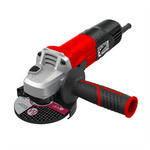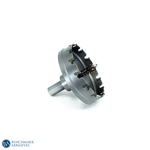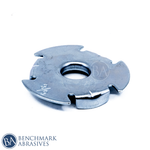
Different Types Of Welding Metals

One of the foundational pieces of knowledge required to be a competent welder is understanding welding metals. Each metal and metal alloy reacts to heat differently and can be worked differently. When heated, metals expand and become softer, producing a variety of uses and applications. Additionally, they react differently to the various welding methods that are employed.
Review the details of each metal in the list below.
Factors to Consider While Choosing a Metal For Welding
When choosing a metal for welding, there are many factors to consider. This comprises:
- Melting level
- The metal's ductility, or how it responds to bending and stretching
- What metal that can be used depends on its electrical conductivity.
- Strength: Metal breaking point.
7 BEST METALS FOR WELDING
1. REGULAR STEEL
Steel's strength is well known to all. It is an alloy with 2% additional elements and iron. Alloys made of carbon and steel are widespread and come in high, low, and medium grades. Carbon-rich steel is stronger. Steel is a flexible material that may be welded using any method. It is necessary to clean the area around the welding. On the downside, oxidation can cause it to corrode and flake.
2. STAINLESS STEEL
Unlike regular steel, stainless steel resists corrosion. This is accomplished via chromium additions of 10% to 30% to other elements. Nickel alloys are available. To weld stainless steel, arc welding is used (TIG, MIG, or Stick). However, the higher price is a drawback.
3. ALUMINUM
Aluminum is less corrosive than other metals, similar to stainless steel. Compared to stainless steel, it is lighter. Aluminum alloys and pure aluminum are used in welding.
Alloys consist of:
- Aluminum/copper alloy
- Manganese alloy
- Zinc alloy
The preferred method for welding aluminum is TIG welding (GTAW). In addition, GMAW and other welding techniques are employed (gas metal arc welding or Mig). Stick welding is only used for modest jobs. Choosing a base metal joint design is the first step in the procedure (tee, lap, edge, corner, or butt).
4. COPPER
Due to its electrical conductivity, thermal conductivity, corrosion resistance, aesthetics, and wear resistance, copper is a common welding metal. For something to be referred to as copper, it must have a minimum of 99.3% copper. Soldering, brazing, and welding are examples of welding techniques. Copper alloys come in different varieties, such as:
- Copper-nickel-zinc (called nickel silver)
- Copper-nickel
- Copper-silicon (named silicon bronze)
- Aluminum-copper alloy (aluminum bronze)
- Copper-tin
- Copper-zinc (also known as brass)
- High copper alloys (up to 5% alloy)
There are two ways to weld copper- Gas Metal Arc Welding and Gas Tungsten Arc Welding. Some welders may use a Manual metal arc welding technique. but the results are of poor quality. Compared to steel, copper welding requires broader joint designs. Copper is shielded by welding-grade argon. The weld areas are cleaned and degreased with a wire bronze brush. After welding, any formed oxides need to be cleaned up.
Although copper is preheated, copper alloys do not require preheating because of their excellent thermal conductivity.
5. CAST IRON
Low-carbon steel is simpler to weld than cast iron when it comes to metals. Cast iron is less ductile and contains more silicon and carbon. To get rid of any embedded grease and oil before welding cast iron, clean the surface. It is necessary to file or grind all cracks. Oxyacetylene welding is used to join cast iron pieces.
6. NICKEL ALLOYS
There are various alloys available for nickel welding metals. These consist of the following:
- NICKEL ALLOY 141 – To weld the case and pure nickel parts, use nickel alloy 141. (Nickel 200 and 201). Nickel and steel are also incorporated into it.
- NICKEL ALLOY 61 – Similar to above
- NICKEL-COPPER ALLOY 190 – Used for welding to or to another substance.
- NICKEL-COPPER ALLOY 60 – used for internal welding.
7. MAGNESIUM
Magnesium alloys are easy to cast, lightweight (about two-thirds the weight of aluminum), and vibration-absorbing. It has a melting point nearby that of aluminum and can be soldered to it.
Be advised that the shavings created during the grinding process are flammable; avoid extinguishing any fires with water. The metal is joined using a TIG welder.
Crucial Considerations
Following are some of the crucial considerations to remember:
-
Weldability: In every welding task, weldability is a key factor. It describes the simplicity with which a metal might be welded to create a strong and stable bond. Some metals are usually simpler to weld than others because of their fundamental properties. The weldability of a metal is purely based on factors including thermal conductivity, melting point and chemical composition. A thorough comprehension of weldability guarantees that the welded joint satisfies the necessary performance and quality standards.
-
Filler Metals: They act as a filler material which can be added to the joint to create a strong bond or weld. Some of the filler metals are rods, wires or powders, etc. They can be chosen by determining the filler metal's compatibility with the base metal, the welding technique and its applications. A disparity between a filler metal and a base metal can generate issues like cracks, weakness in the weld or porosity. Therefore, it is essential to choose a filler metal carefully by considering these factors to ensure enhanced performance.
- Welding technique: choosing the right welding technique or process plays an essential role in welding operations. In order to form a solid and long-lasting bond, it entails using heat to melt the workpieces' edges, frequently with the inclusion of a filler metal. Some of the popularly used Welding techniques are arc welding, gas welding and resistance welding. For a good and dependable weld, welders must carefully choose the right technique and parameters.



































































